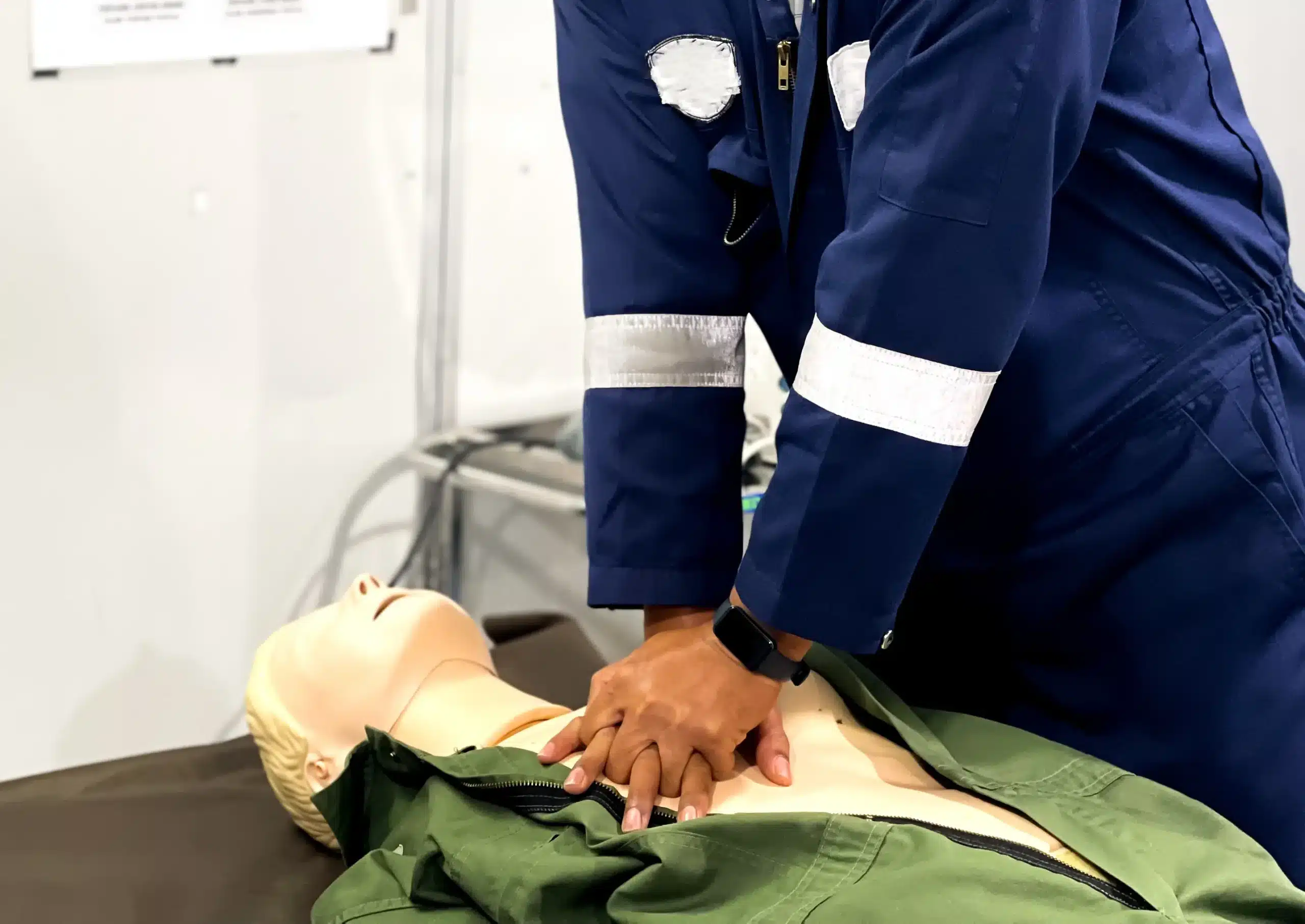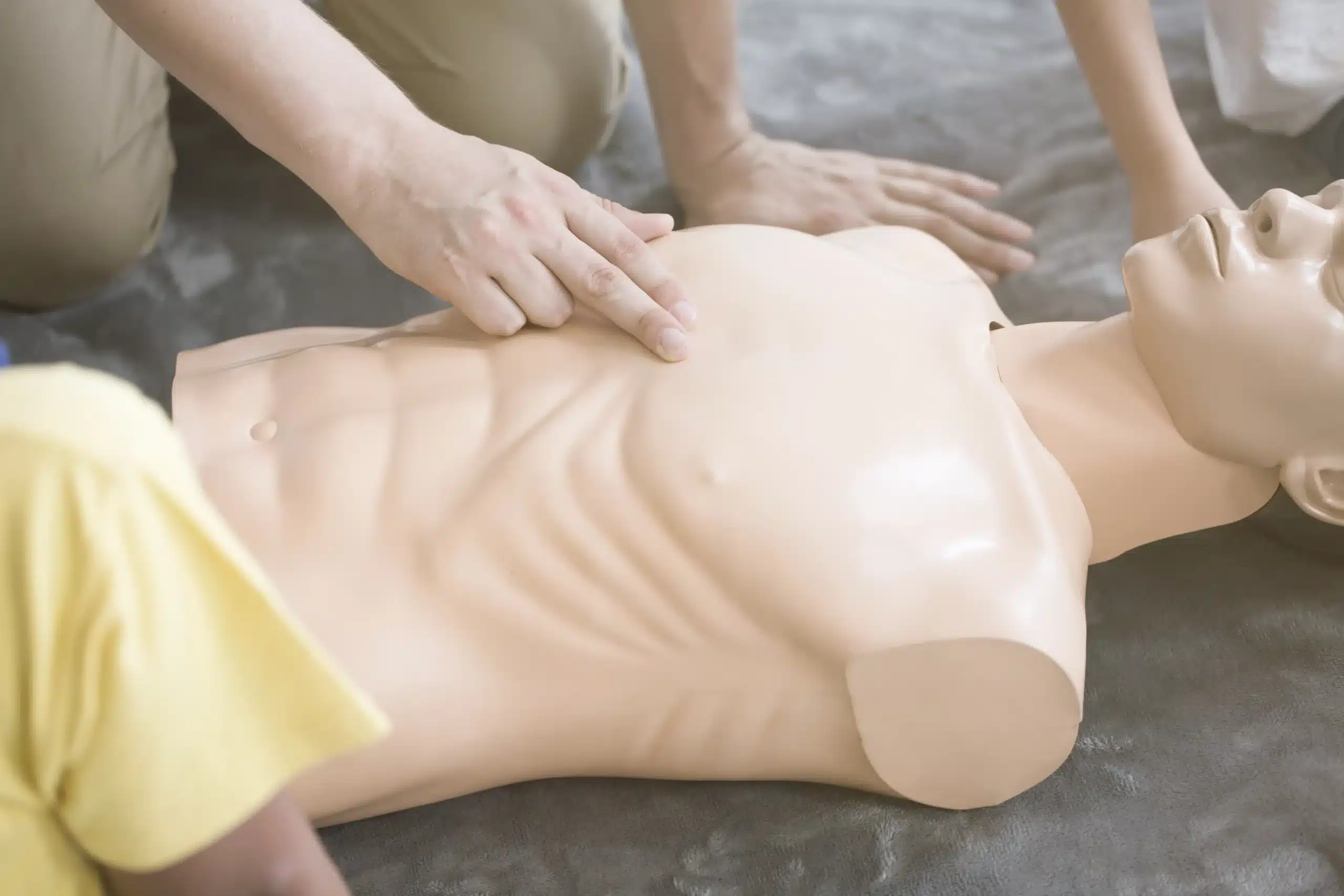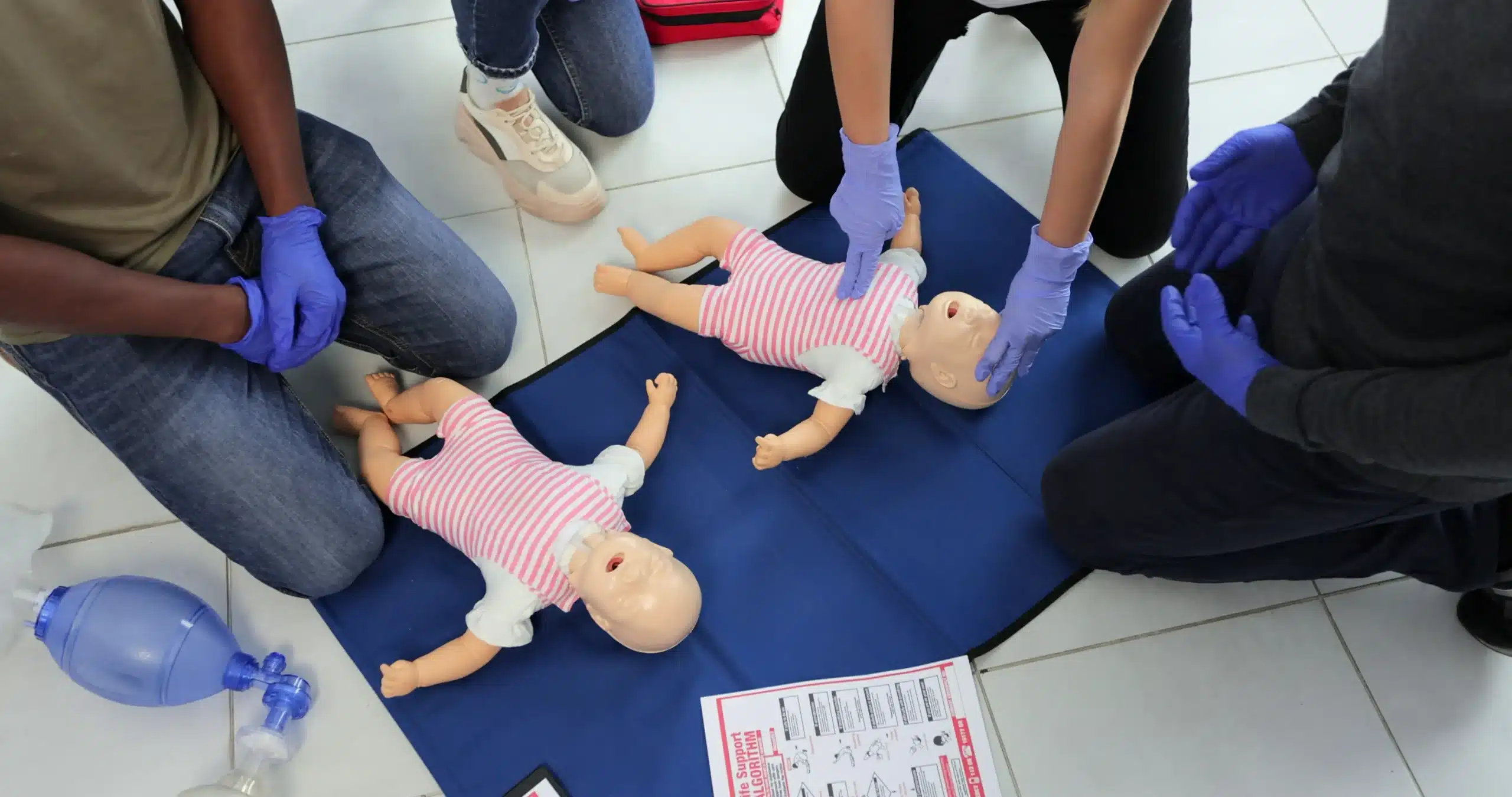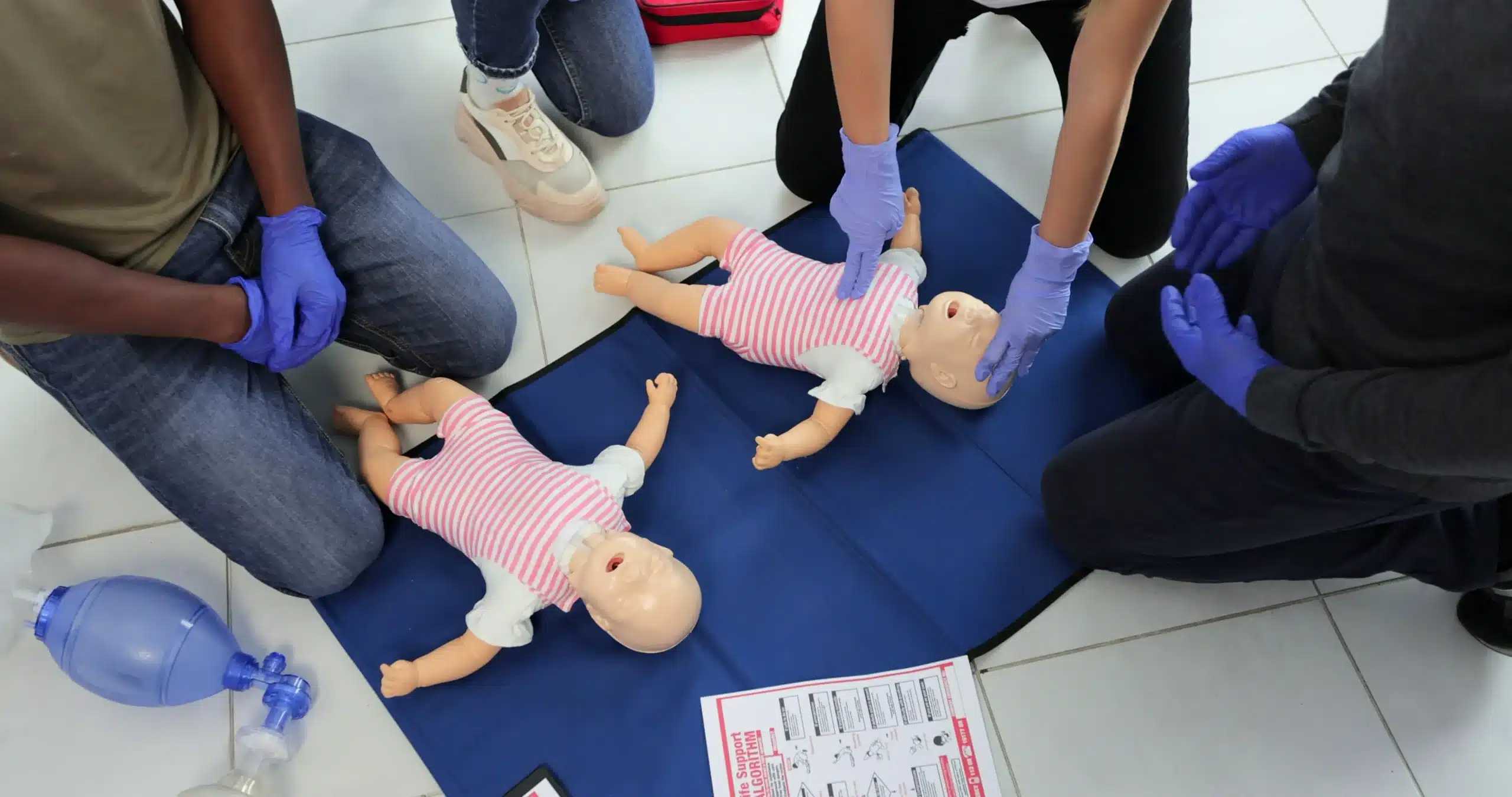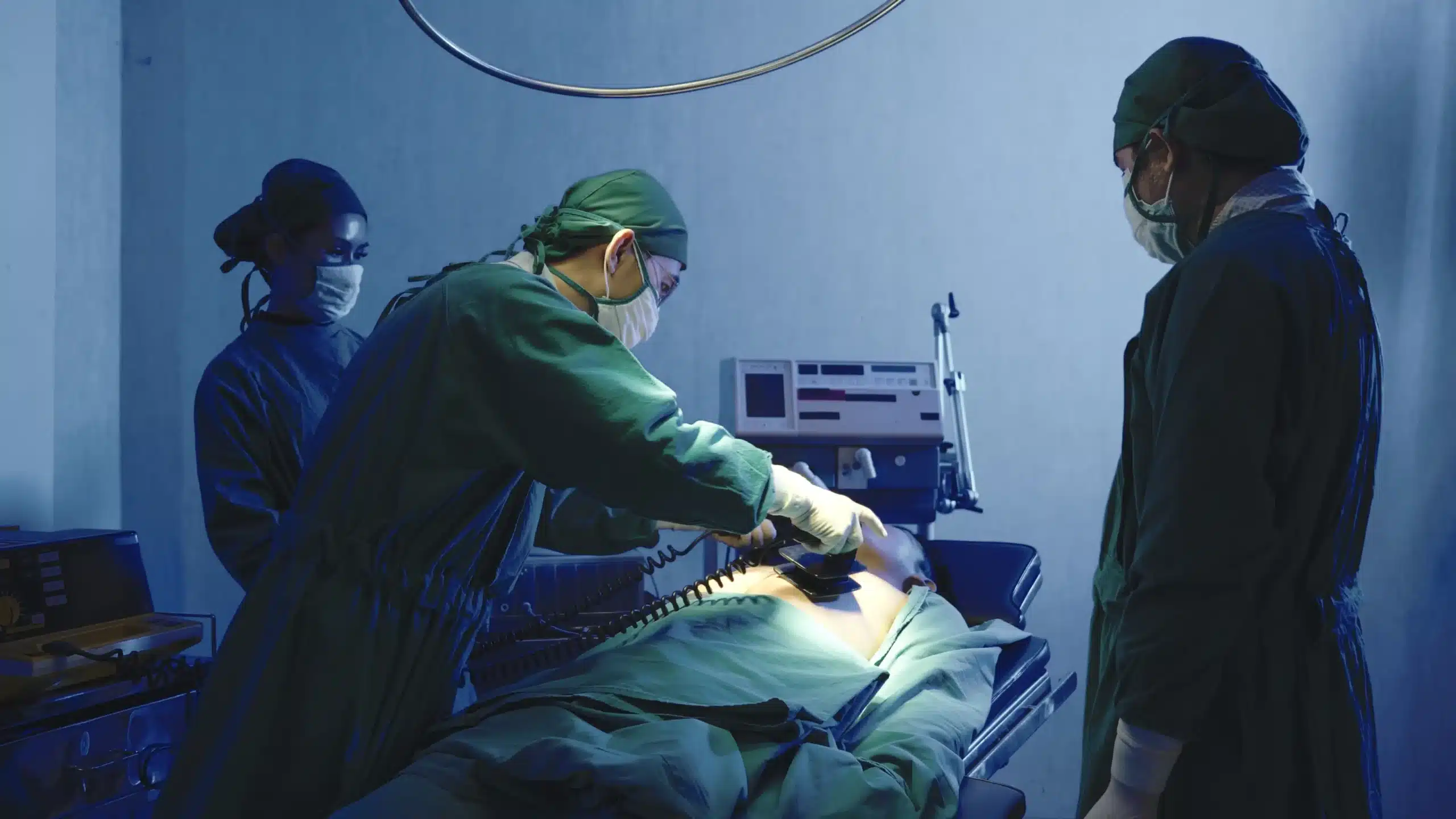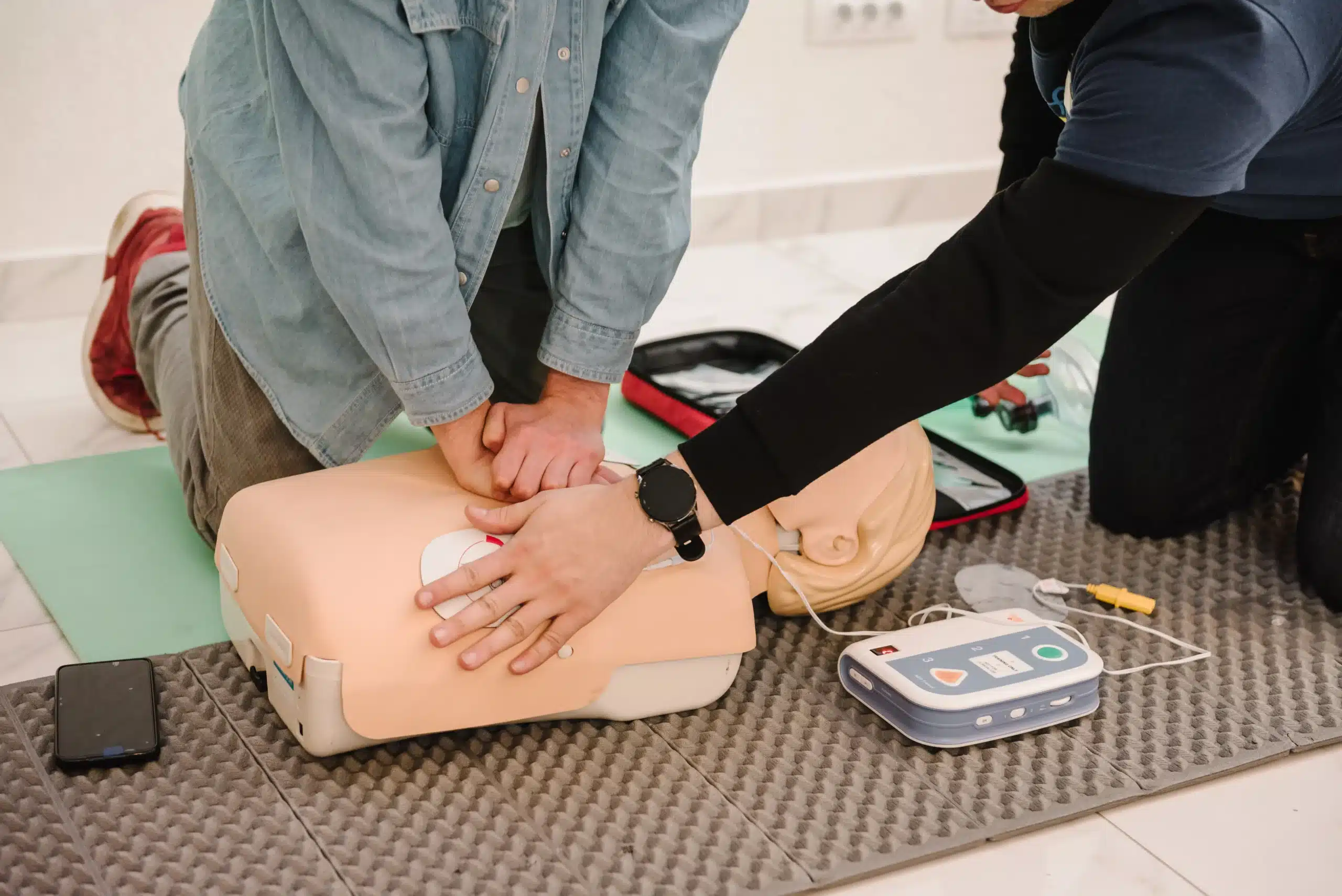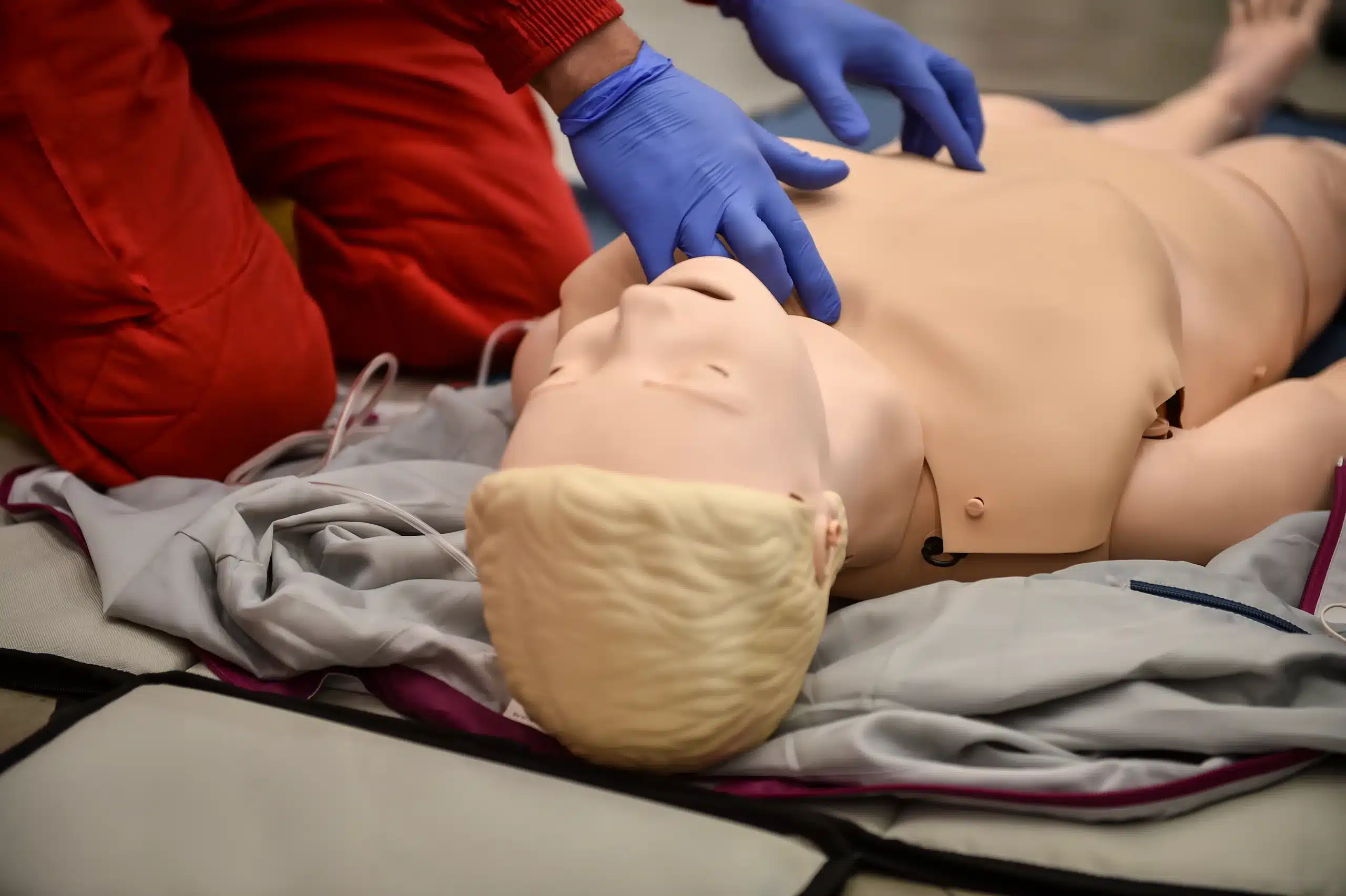You’ve dedicated yourself to a career in healthcare, and that means constantly learning and growing. Staying up-to-date with your BLS certification is a crucial part of that journey. This guide focuses on BLS refresher courses in Alameda, offering practical advice and resources to help you choose the right course, prepare effectively, and maintain your skills. We’ll explore different learning formats, discuss cost and scheduling considerations, and provide tips for overcoming common challenges, so you can approach your recertification with confidence.
Key Takeaways
- BLS refresher courses are crucial for staying prepared for medical emergencies. Whether you’re a healthcare professional or not, these courses equip you with life-saving skills like CPR, AED use, and airway management. Choose a course format—in-person, online, or blended—that fits your schedule and learning style.
- Finding the right BLS course involves asking the right questions. Consider factors like cost, schedule, and the provider’s reputation. Inquire about course content, certification type, and available payment options to make an informed decision.
- Maintaining BLS skills is an ongoing process. Regular practice, online resources, and local training opportunities can help you stay sharp and confident. Stay updated on the latest AHA guidelines to ensure you’re always ready to respond effectively in a crisis.
What is a BLS Refresher Course?
A BLS refresher course updates healthcare providers and other professionals on the latest Basic Life Support (BLS) guidelines and techniques. These courses cover essential life-saving skills, from CPR and AED use to airway management. BLS equips you to respond confidently in medical emergencies, whether you’re a healthcare professional or not. If you’re looking for BLS training, this guide can help you find resources near you. A BLS refresher is crucial for anyone who needs to maintain their certification or simply wants to brush up on their skills. It’s a vital step in ensuring you’re prepared to provide effective care in critical situations.
Why Healthcare Professionals Need Refresher Courses
For healthcare professionals, maintaining BLS certification isn’t just a good idea—it’s often a requirement. It demonstrates a commitment to providing high-quality patient care and meeting professional standards. Understanding the common challenges related to BLS recertification requirements can help healthcare professionals better plan their recertification process and avoid potential setbacks. Staying up-to-date on the latest BLS guidelines ensures you’re equipped to handle emergencies effectively and provide the best possible outcomes for your patients.
Essential Skills Covered
BLS refresher courses cover a range of essential skills necessary for responding to medical emergencies. Immediate response is key in life-threatening situations such as cardiac arrest, choking, or drowning, and BLS training provides the tools you need to act quickly. Refresher courses also reinforce high-quality chest compressions and rescue breaths, ensuring you can deliver effective CPR. You can find more information on the benefits of BLS recertification. These courses also cover using an AED, managing airways, and recognizing the signs of a medical emergency, ultimately increasing the chances of survival for those in need.
Best BLS Refresher Courses in Alameda
Finding the right BLS refresher course can feel overwhelming, but several excellent options are available in Alameda. Here’s a rundown of some top choices:
Safety Training Seminars
Safety Training Seminars, a woman-owned AHA Training Center, stands out for its commitment to customer service. They offer various courses, including BLS, ACLS, PALS, CPR, and First Aid. A major advantage? You receive your certification card the same day you complete the class—perfect for busy professionals. They also offer EMSA Child Care Health and Safety training and discounts for groups. Check out their low price guarantee.
Bata Education
If you’re looking for a comprehensive BLS refresher, Bata Education offers a 5-hour American Heart Association (AHA) BLS CPR certification course. Their course covers essential skills for healthcare providers, including adult, child, and infant CPR, AED use, and team resuscitation techniques.
American Heart Association Training Centers
The American Heart Association (AHA) itself offers various BLS renewal options. You can find everything from convenient online courses to traditional in-person classes, giving you flexibility in how you complete your recertification. This allows you to choose the learning environment that best suits your needs and schedule.
Bay Area CPR
Bay Area CPR provides a range of American Heart Association-approved courses, including CPR, BLS, ACLS, PALS, and First Aid. They believe everyone should have these life-saving skills—not just healthcare professionals. Learn more about their CPR and BLS classes in Alameda.
Alameda Fire Department
The Alameda Fire Department offers CPR and First Aid training to community members. Their focus is on equipping residents with the skills to respond effectively in emergencies. Contact the Alameda Fire Department directly for more information on their BLS refresher options.
ProCPR
For those who prefer online learning, ProCPR offers online BLS certification courses. Their self-paced format allows you to complete the training when it’s convenient for you, while still ensuring you meet all the necessary skills assessment requirements.
Course Formats & Duration
Finding the right BLS refresher course often comes down to format and schedule. Thankfully, there are several options available to fit your learning style and time constraints. Let’s take a look at the most common types: in-person, online, and blended learning.
In-Person Courses
In-person BLS refresher courses offer hands-on training and direct interaction with instructors. This format allows for immediate feedback, which is essential for mastering the skills required in emergency situations. You’ll work with training manikins and practice techniques in a realistic environment. In-person BLS courses provide a structured learning experience with experienced professionals. These courses typically run for several hours on a single day, allowing you to get recertified efficiently.
Online Options
Online BLS refresher courses have become increasingly popular, offering flexibility for busy professionals. You can complete the coursework from anywhere with internet access, making it a convenient option for those with demanding schedules or limited access to in-person classes. Online learning can be a great solution for fitting continuing education into your life, especially considering the challenges of BLS recertification. Keep in mind that online courses usually require a separate in-person skills assessment to receive your certification.
Blended Learning
Blended learning combines the best of both worlds. These courses offer a mix of online learning and in-person skills practice. You can complete the theoretical components online at your own pace, then attend a shorter in-person session to demonstrate your skills and receive your certification. This hybrid approach offers a flexible option for those who appreciate the convenience of online learning but also value hands-on instruction. A blended learning format can be a great way to balance your learning preferences with your schedule. Blended courses can vary in duration depending on the provider and specific course content.
Cost & Payment
Knowing the price range for BLS refresher courses helps you budget effectively. Let’s break down typical costs, potential discounts, and payment options.
Typical Pricing
BLS certification and recertification courses typically cost between $60 and $150. Several factors influence the final price, including the training provider, the course format (online, in-person, or blended learning), and the location. Safety Training Seminars prioritizes affordability, striving to offer competitive rates for high-quality training. Check our website for the most up-to-date pricing on our BLS refresher courses.
Available Discounts
Many training centers offer discounts, so keep an eye out for those! You might find lower prices for group registrations, students, military personnel, or first responders. These discounts can make BLS recertification more accessible. Safety Training Seminars frequently offers discounts for group classes, so if you’re training with colleagues, be sure to ask. Check our low price guarantee to compare our prices with other providers.
Payment Plans
It’s always a good idea to ask about payment options. Some training providers understand that covering the cost of a course upfront can be challenging. To make training more manageable, they may offer flexible payment plans or financing options, allowing you to pay in installments. Contact individual providers, like Safety Training Seminars, to learn about specific payment options available for their BLS refresher courses.
What to Expect During a BLS Refresher Course
A BLS refresher course reinforces your existing skills and updates you on the latest American Heart Association guidelines. Here’s what you can typically expect:
Course Content
BLS refresher courses cover core life-saving techniques. You’ll review essential skills like high-quality CPR for adults, children, and infants, along with the effective use of an AED. Airway management techniques are also key, so you can confidently address breathing emergencies. Because BLS training prepares you to respond to various medical emergencies, the course also covers special resuscitation situations, such as opioid overdose and choking.
Hands-On Practice
Hands-on practice is crucial for mastering BLS skills. Expect a significant portion of your refresher course to involve practicing these techniques. You’ll work with training manikins to simulate real-life scenarios, giving you a chance to refine your CPR technique, practice AED use, and perfect airway management skills. Many BLS training courses use blended learning, combining online coursework with in-person skills practice. This lets you learn the material at your own pace and then focus on hands-on training during the in-person session.
Assessment Methods
To receive your BLS recertification, you’ll need to show competency in all the skills covered. The American Heart Association requires an in-person skills assessment for certification. This typically involves performing CPR and other BLS skills on a manikin while an instructor evaluates you. You may also have a written exam covering the latest guidelines and protocols.
Certification & Validity
Certification Types
Safety Training Seminars offers American Heart Association (AHA) BLS certification, the gold standard for healthcare professionals. This certification shows you know your stuff when it comes to basic life support and meets requirements for most healthcare jobs. Make sure any course you take offers an AHA-aligned certification to maintain your professional standing and comply with workplace rules.
How Long is Certification Valid?
Your BLS certification is good for two years. Keep track of your certification’s expiration date so you’re always ready for emergencies. Set a reminder well in advance so you don’t let it lapse.
Renewing Your Certification
The AHA offers several ways to renew your BLS certification, both online and in person. Safety Training Seminars offers convenient BLS renewal courses right here in Alameda. Regularly practicing your skills and staying up-to-date on AHA guidelines is key. Think about adding certifications like ACLS, PALS, or NRP to boost your skills and open up more career opportunities. Staying on top of your BLS recertification means you’re always prepared to provide excellent care.
Choosing the Right BLS Refresher Course
Finding the right BLS refresher course means considering a few key factors to ensure it fits your needs and learning style. It’s a significant decision, so take your time and explore your options.
Factors to Consider
When selecting a BLS provider, think about the course format. Do you prefer in-person instruction, the flexibility of online learning, or a blended approach? Consider your schedule and learning preferences. Many BLS training courses now use a blended learning format, combining online learning with hands-on skill practice. This lets you learn the material at your own pace and then demonstrate your skills in person. Also, consider the cost of the course and the training center’s reputation. Look for providers, like Safety Training Seminars, known for high-quality instruction. Reading reviews and asking for recommendations can give you a sense of the quality of different providers.
Questions to Ask
Before committing to a BLS refresher course, ask a few clarifying questions. First, confirm how long the BLS certification is valid. Typically, it’s valid for two years. Knowing this helps you plan for your next renewal. If you work in healthcare, ask about support from your employer for BLS recertification. Some healthcare professionals find they lack employer support, so it’s best to know what resources you have. Finally, ask about the training costs and if any financial assistance or payment plans are available. Understanding the total cost upfront helps you budget accordingly. Cost can be a challenge in BLS certification renewal.
Preparing for Your BLS Refresher
Getting ready for your BLS refresher course doesn’t have to be stressful. With a little preparation, you can walk into class feeling confident and ready to learn. Here’s what you should know:
Prerequisites
To enroll in a BLS refresher course, you’ll typically need a current or recently expired BLS certification. Providers like Safety Training Seminars emphasize staying updated on the BLS recertification requirements for healthcare professionals. Check with your employer or chosen training center to confirm their specific requirements.
Study Materials
BLS training equips you with the skills to respond immediately in life-threatening situations like cardiac arrest, choking, or drowning. The American Heart Association (AHA) provides various BLS renewal options, from convenient online courses to traditional in-person classes. Review any materials from your instructor or training center ahead of time. Even a quick overview can make a big difference in how easily you absorb the information during the refresher course.
What to Bring
Keep it simple. Bring a notepad and pen to jot down important reminders. Also, bring any previous BLS certification cards or documentation required by the training provider. Having these items readily available will streamline the check-in process and ensure a smooth start to your refresher course.
Common Recertification Challenges
Let’s face it, renewing your BLS certification can sometimes feel like a hurdle. Between busy schedules, evolving guidelines, and the pressure of testing, several common challenges can pop up. But don’t worry, being aware of these challenges is the first step to tackling them head-on.
Managing Your Time
One of the biggest obstacles to BLS recertification is simply finding the time. Many healthcare professionals juggle demanding work schedules, family commitments, and other obligations, making it tough to carve out time for a refresher course. A lack of employer support can add another layer of difficulty. Look for courses that offer flexible scheduling options, such as evening or weekend classes, or explore online or blended learning formats that allow you to learn at your own pace. At Safety Training Seminars, we offer a variety of scheduling options to accommodate busy professionals. Check out our course calendar to find a time that works for you.
Staying Up-to-Date
BLS guidelines and best practices are constantly evolving, so staying current can be a challenge. It’s essential to choose a refresher course that covers the latest information and techniques. This ensures you’re equipped with the most up-to-date knowledge and skills to provide effective patient care. The cost of training can sometimes be a barrier. Check with your employer to see if they offer any reimbursement programs or explore options like our low price guarantee at Safety Training Seminars. We believe that staying current with your BLS certification shouldn’t break the bank.
Handling Test Anxiety
For some, the pressure of a certification exam can trigger test anxiety, making it difficult to focus and perform at their best. Remember, these refresher courses are designed to build your confidence and reinforce your skills. If you struggle with test anxiety, consider practicing with online quizzes or flashcards, or talk to your instructor about strategies for managing stress during the exam. Our instructors at Safety Training Seminars are experienced in supporting students and creating a positive learning environment. We also offer same-day certification cards, so you can put your new skills to use right away. Contact us to learn more about our courses and how we can help you succeed.
Maintaining BLS Skills
Once you’ve earned your BLS certification, regular practice is key to staying sharp and confident in your abilities. It’s easy to let those skills fade, but consistent reinforcement will ensure you’re always ready to respond effectively in a crisis. This section offers practical advice and resources to help you maintain your BLS skills.
Practice Techniques
Regular practice is essential for maintaining proficiency and confidence in emergency situations. Think of it like any other skill—the more you use it, the better you become. Hands-on practice is the most effective way to reinforce what you’ve learned. Consider these techniques:
- Personal Practice: Use a CPR manikin to rehearse chest compressions, rescue breaths, and the steps for using an AED. You can purchase a manikin for home practice or check if your local training center offers open practice sessions. Even practicing on a pillow can help maintain muscle memory for compressions.
- Group Practice: Organize practice sessions with colleagues or friends who are also BLS certified. This creates a supportive learning environment where you can give each other feedback and reinforce best practices. Run through various scenarios, like choking or cardiac arrest, to build your confidence.
- Visualization Techniques: When you don’t have access to a manikin, mental rehearsal can be a powerful tool. Visualize yourself performing BLS steps, focusing on the correct techniques and sequence. This can help solidify your knowledge and improve your reaction time in a real emergency.
Online Resources
Beyond hands-on practice, a wealth of online resources can supplement your BLS training and keep your knowledge current. These resources offer convenient and flexible ways to refresh your skills and stay informed about the latest guidelines:
- Online BLS Refresher Courses: Many organizations offer online BLS refresher courses. These courses often include interactive modules, videos, and quizzes to reinforce key concepts and assess your understanding.
- AHA Resources: The American Heart Association website provides valuable resources, including updated guidelines, videos demonstrating proper techniques, and educational materials on various BLS topics. Staying informed about the latest recommendations is crucial for providing the most effective care.
- Medical Journals and Publications: Staying current with medical journals and publications can keep you informed about advancements in resuscitation science and best practices. Even setting aside a little time each month can make a difference.
Local Opportunities
Take advantage of local opportunities to reinforce your BLS skills and connect with other healthcare providers in your community. Here are some options to explore:
- Refresher Courses: Check with local hospitals, community centers, and training organizations for upcoming BLS refresher courses. Safety Training Seminars offers a range of AHA courses, including BLS certification in several formats. Alameda CPR Classes offers in-person BLS training in Alameda.
- Workshops and Seminars: Keep an eye out for workshops and seminars focused on specific aspects of BLS, such as AED use or advanced airway management. These can provide valuable hands-on practice and expert guidance.
- Networking: Attending local BLS training events can also be a great way to network with other healthcare professionals and share best practices. Connecting with others in your field can provide valuable support and keep you motivated.
Related Articles
- BLS Certification: Career Benefits for Healthcare Professionals – Alameda CPR Classes
- BLS Certification: Build Confidence in Emergency Situations – Alameda CPR Classes
- BLS Courses in Berkeley: Your Complete Guide – Alameda CPR Classes
- BLS Training Classes in Alameda, CA: Your Guide – Alameda CPR Classes
- CPR vs. BLS: Which Certification Do You Need? – Alameda CPR Classes
Frequently Asked Questions
How often do I need to renew my BLS certification? BLS certification is typically valid for two years. It’s essential to keep track of your expiration date and plan for recertification accordingly. Setting reminders or marking your calendar can help you avoid lapses in certification.
What’s the difference between online and in-person BLS refresher courses? Online courses offer flexibility, allowing you to learn at your own pace and from anywhere with internet access. However, they usually require a separate in-person skills assessment. In-person courses provide hands-on training, direct interaction with instructors, and immediate feedback, often leading to same-day certification.
What if I don’t work in healthcare? Do I still need BLS certification? While BLS certification is often a requirement for healthcare professionals, it’s a valuable skill for anyone to have. Knowing how to respond to medical emergencies can make a real difference in life-threatening situations, whether you’re at home, in the workplace, or out in the community.
How much does a BLS refresher course cost? The cost of a BLS refresher course can vary depending on the training provider, location, and course format. It typically ranges from $60 to $150. Many providers offer discounts for groups, students, or other affiliations, so it’s always worth asking.
What should I expect during the BLS skills assessment? The skills assessment typically involves demonstrating your BLS skills on a manikin in front of an instructor. You’ll be evaluated on your CPR technique, AED use, and other essential skills covered in the course. Some providers may also include a written exam covering BLS guidelines and protocols.


